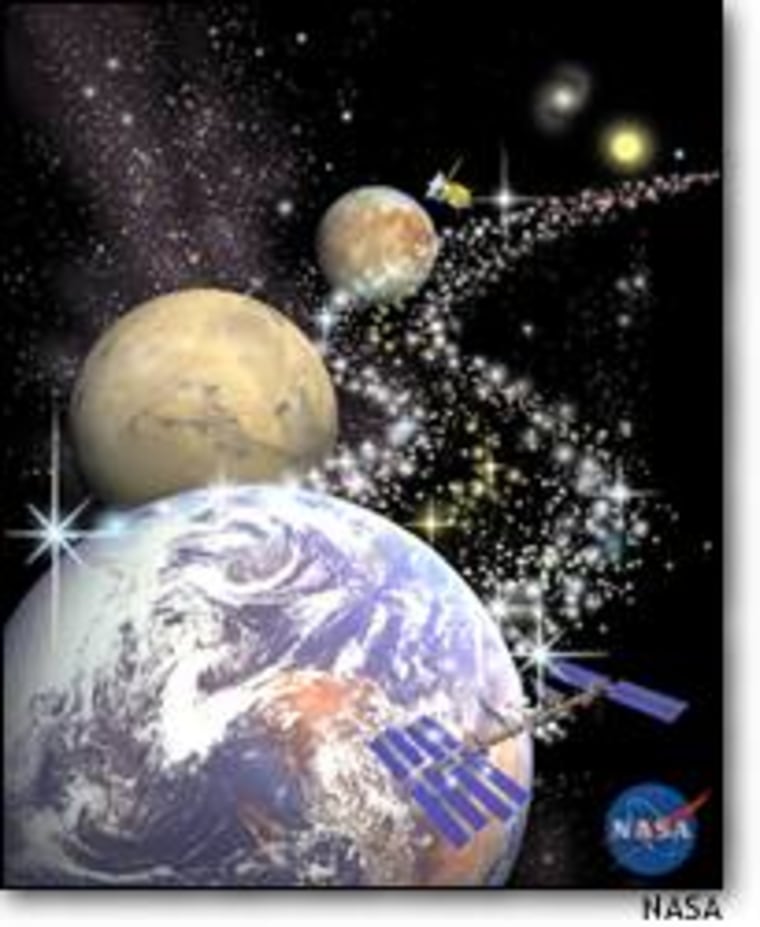Would life forms on other worlds have to possess eyes, ears and limbs like higher organisms on Earth? Would they have to have a similar genetic code? Or can life exist not as we know it? These questions may be unanswerable now, but astrobiologists are anxious to answer the underlying question: How do you define life?
To be sure, finding traces of bacteria wouldn’t be as exciting as finding clear evidence of a Martian civilization — and looking for microbial evidence of life is a lot more challenging, astrobiologists say. “It would be a whole lot easier to find an elephant on Mars, but the fact is, we haven’t found any,” joked Lynn Rothschild, an evolutionary biologist at NASA’s Ames Research Center.
Nevertheless, even the discovery of extraterrestrial microbes would surely transform the way humans look at the universe, astrobiologists say.
“There really is a trivial difference between us and bacteria,” Rothschild said. “The gulf is between what’s alive and what’s not alive.”
David Morrison, who heads Ames’ astrobiology and space research directorate, pointed to the surge of interest that followed the announcement in 1996 that a meteorite traced to Mars contained microscopic structures that looked like fossilized bacteria.
“This wasn’t just microbial life, it was dead microbial life,” Morrison said. “That’s one example where it would seem as if the public response was very interesting and very exciting.”
The case of the Mars meteorite, known as ALH84001, also underlined the difficulty of the search: Since that announcement was made, other scientists have raised questions about the potential for earthly contamination of the sample, or for the misinterpretation of purely inorganic structures at a scale of billionths of a meter.
Eventually, NASA intends to bring fresh samples of Martian material back to Earth for microscopic analysis, although the space agency’s recent setbacks are likely to stretch the timetable past 2010. By that time, astrobiologists will have to develop unambiguous tests to determine whether a structure is of biological or non-biological origin.
“We don’t want to spend five years arguing about whether this feature was caused by life or not,” said NASA researcher David McKay, who analyzed ALH84001. “That’s just not a good use of those Mars samples. We want to have a series of yes-or-no questions that we can ask about those samples that will really give us the answer.”
Learning the code
University of Washington paleontologist Peter Ward believes samples will eventually have to be taken from deep beneath the Martian surface, just as researchers on Earth are digging deep to find Precambrian fossils. “My prediction is we’re going to find bacteria in both places.”
And if organic material is found, that would be the beginning of a “fascinating story,” Ward said.
“We need to get there and do the DNA sequencing,” he said. “Is DNA just one way or the only way? What if the syntax or the language (of the genetic code) was markedly different?”
Such a story could shed light on Earth’s history: Did the DNA coding scheme we’re familiar with “win out” over competitors? Some theoreticians even speculate that Earth’s genetic code might have been brought in from elsewhere via meteorites or comets. If DNA is detected in a sample from Mars, and if scientists confirm that the sample was not contaminated during the experiment, that would raise the questions worthy of a science-fiction plot.
“Did we actually come from Mars at one point?” Rothschild asked. “Mars had an extra billion years over us, in terms of the presence of liquid water. Are we really just staring straight into the eyes of our ancestors?”
Morrison said astrobiologists also are looking toward the future, when our own descendants contemplate moving beyond Earth — perhaps as an insurance policy against an asteroid armageddon or an environmental catastrophe, or perhaps just to explore the next frontier.
“We have to understand the potential for terrestrial life to move beyond the planet of origin ... to live there, to grow crops, to have a properly functioning life support system for babies to be born.”
